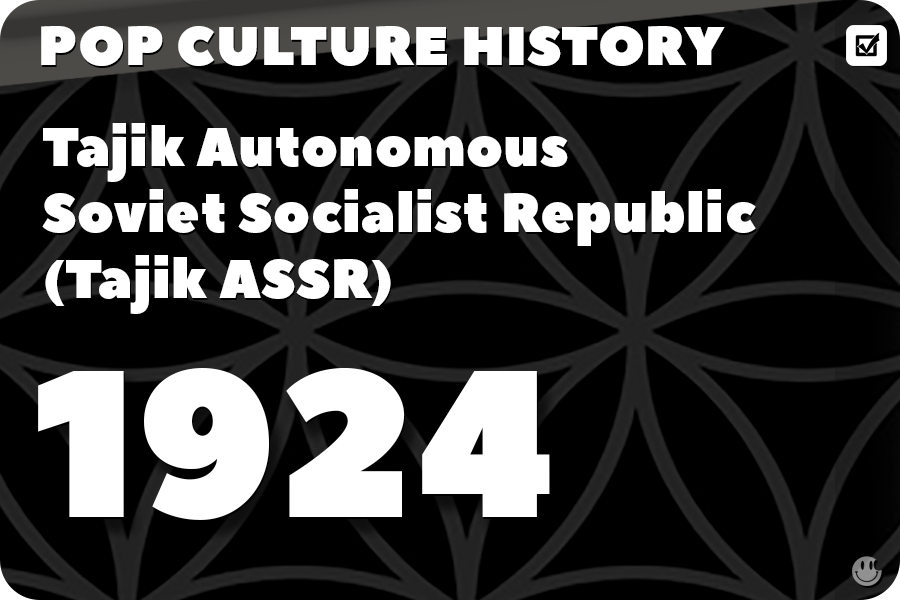 |
The Tajik Autonomous Soviet Socialist Republic (Tajik ASSR) |
The Tajik Autonomous Soviet Socialist Republic (Tajik ASSR) was an administrative unit within the Russian Soviet Federative Socialist Republic (RSFSR) that was established to represent the Tajik people, an ethnic group native to Central Asia. Dates and Details:
Tajik ASSR Facts:
Effects on Pop Culture:
Prominent People and Countries Involved:
|









